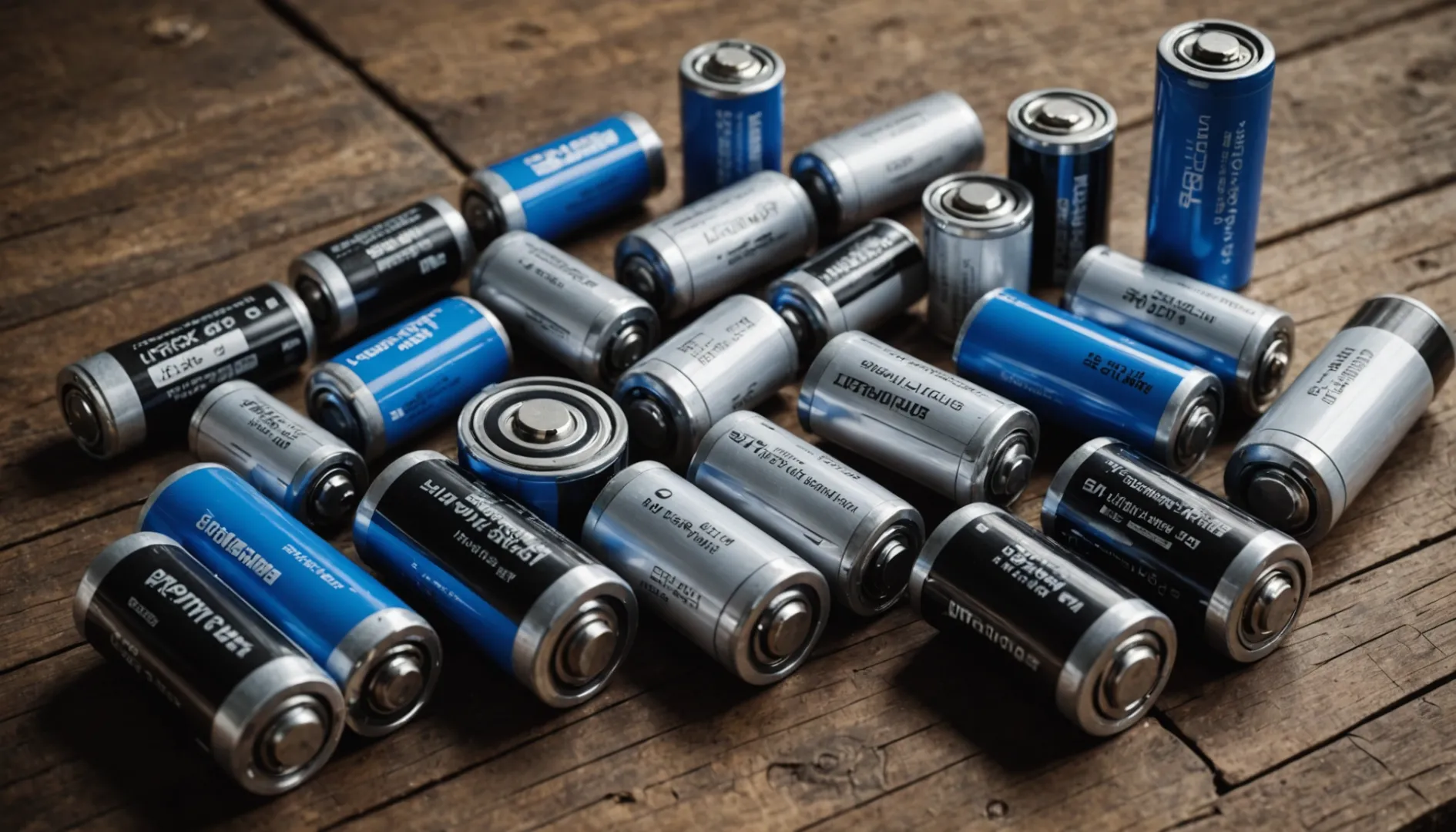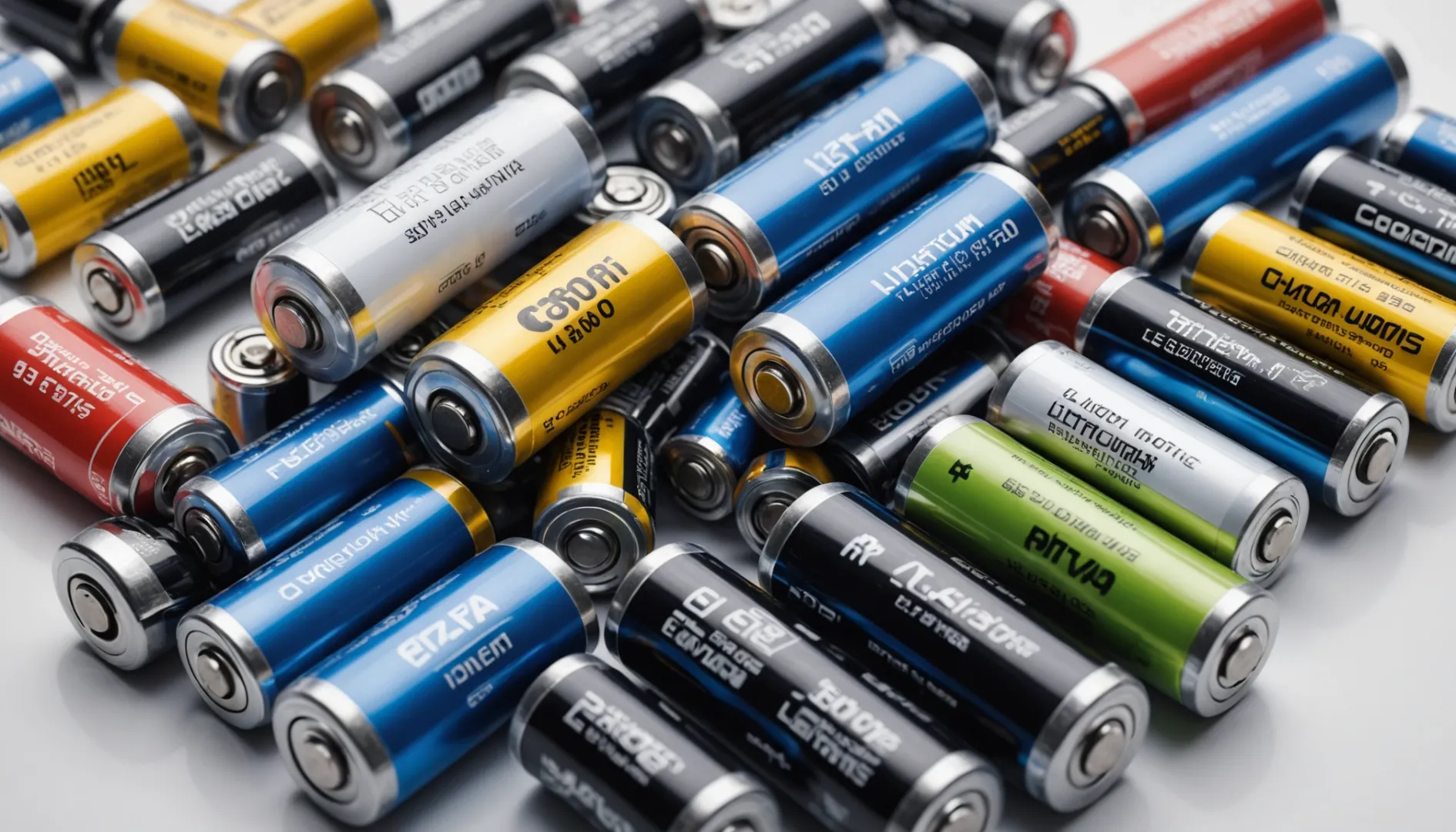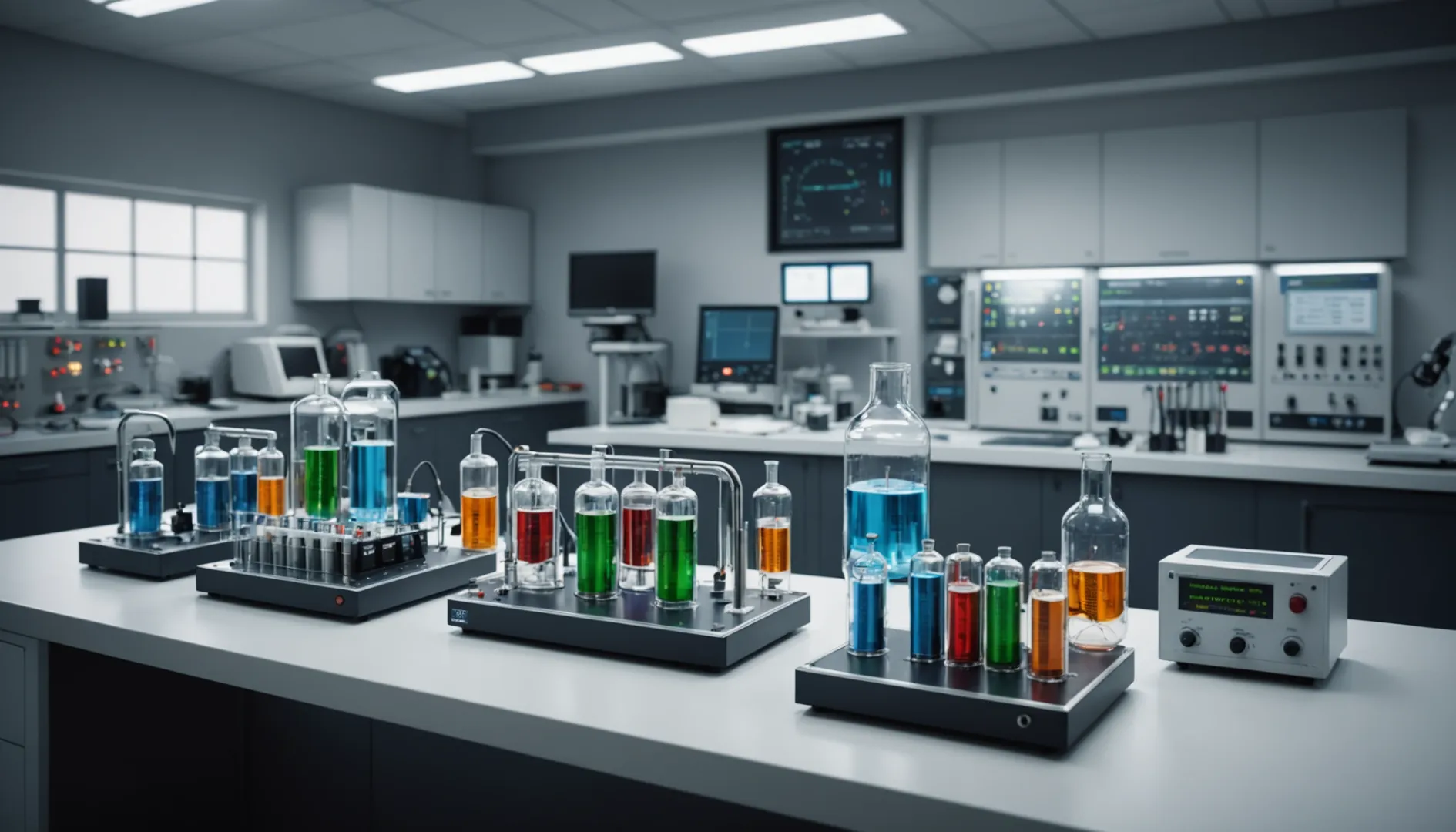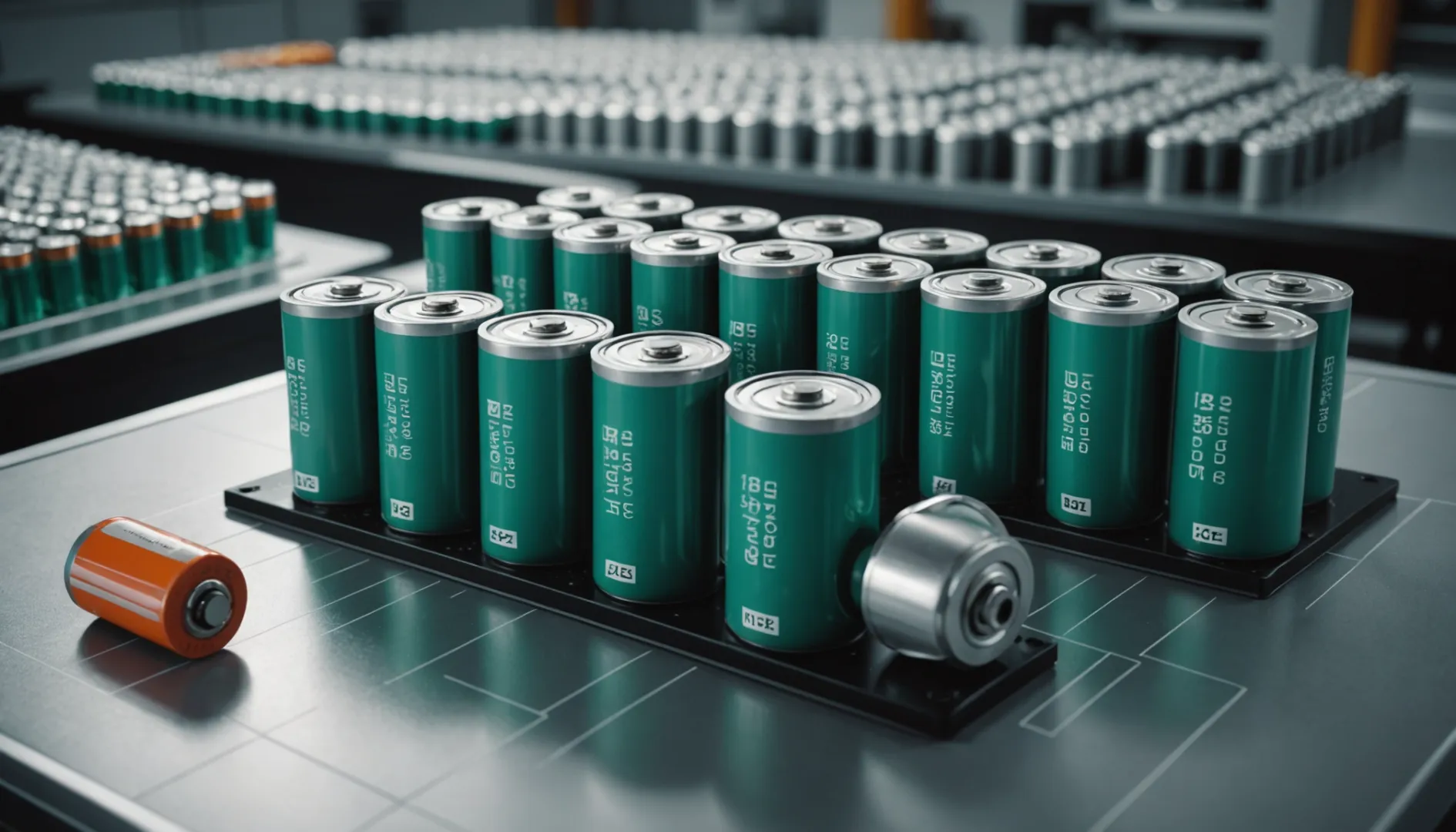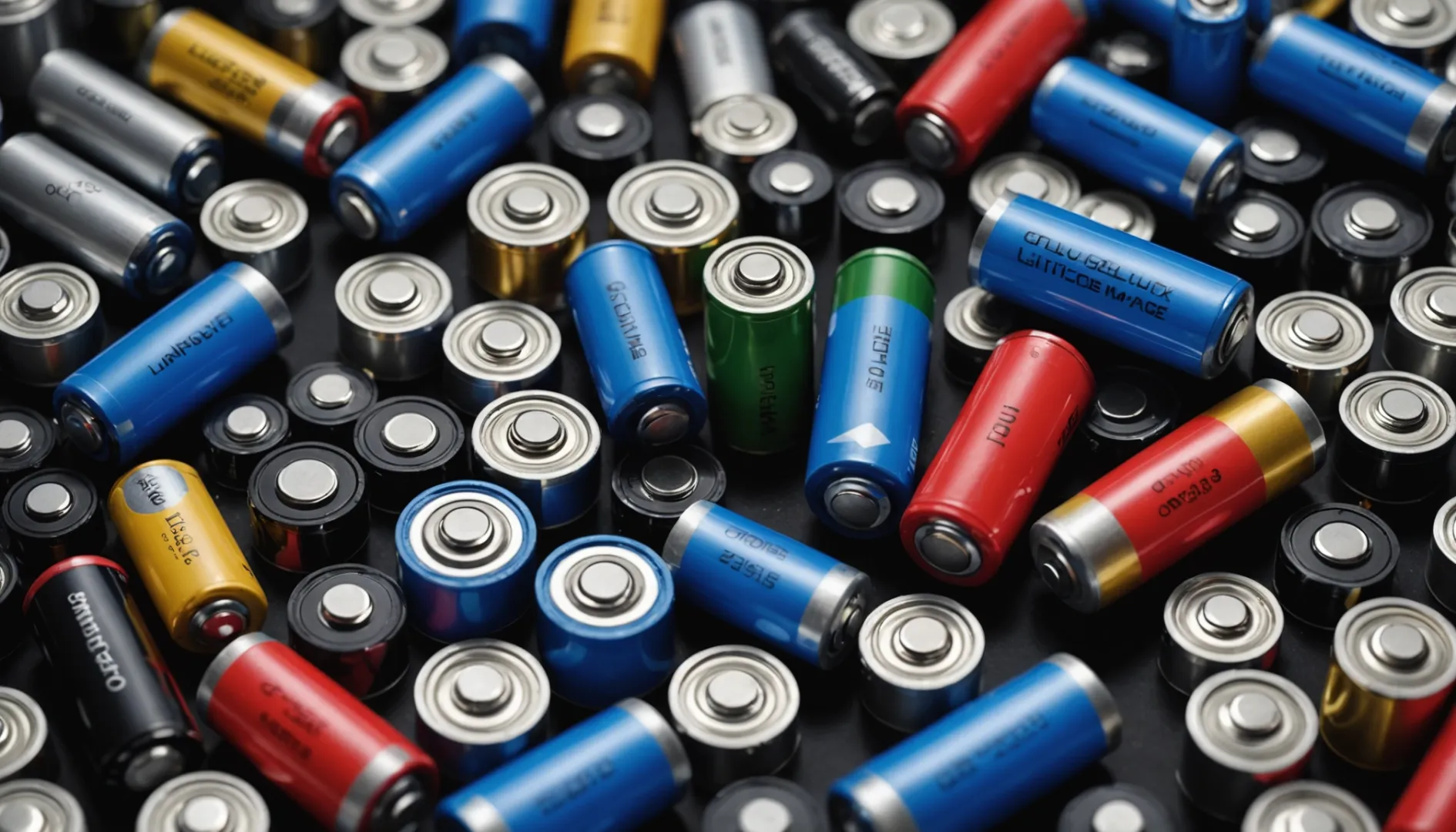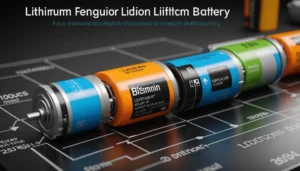Ever wondered why your phone's battery lasts longer than your friend's? Not all lithium batteries are created equal!
No, not all lithium batteries have the same capacity. The capacity depends on factors like chemistry, cell size, design optimization, and intended application, which result in a wide range of performance outcomes.
If you're like me and get geeked out over gadgets, you know that choosing the right lithium battery can be quite the puzzle. I remember the first time I had to replace my laptop battery—I was baffled by the options! Let’s dive into what makes these power packs so different and how to pick the perfect one for your needs.
Lithium Cobalt Oxide batteries have highest energy density.False
NMC batteries can reach higher energy densities than LiCoO2.
21700 cells have 50% more capacity than 18650 cells.True
21700 cells offer about 50% greater capacity and energy density.
What Are the Different Types of Lithium Battery Chemistries?
Imagine trying to choose the perfect lithium battery, feeling lost among all the technical details. Understanding the different chemistries can make this task much easier.
Lithium battery chemistries like Lithium Cobalt Oxide (LiCoO2), Lithium Iron Phosphate (LiFePO4), and Lithium Nickel Manganese Cobalt Oxide (NMC) differ in energy density, safety, and lifespan.
Lithium Cobalt Oxide (LiCoO2) Batteries
I remember when I first learned about LiCoO2 batteries; it was like discovering a hidden superpower behind my trusty old laptop. These batteries pack a punch with their high energy density, perfect for powering gadgets like smartphones and laptops. However, there's a catch—they have limited thermal stability, which can be a safety concern. The cobalt content also makes them a bit of an environmental puzzle, especially when it comes to recycling. I've often wondered about the environmental impact1 of all those discarded electronics.
Lithium Iron Phosphate (LiFePO4) Batteries
LiFePO4 batteries remind me of the reliable friend who always has your back. They excel in thermal and chemical stability, which means they're safer and last longer. Their lower energy density compared to LiCoO2 doesn't stop them from being the go-to choice for applications where safety is key, like electric buses and energy storage systems. I find it fascinating how they compare2 in terms of longevity with other chemistries.
Lithium Nickel Manganese Cobalt Oxide (NMC) Batteries
Think of NMC batteries as the versatile multitaskers in the battery world. Balancing energy density, lifespan, and cost, they're commonly found in electric vehicles and power tools. It's interesting how tweaking the balance of nickel, manganese, and cobalt can fine-tune their performance—more nickel means higher energy density but might compromise stability. I often delve into battery optimization3 studies to understand these trade-offs.
Other Emerging Chemistries
The future of batteries is buzzing with possibilities like Lithium Sulfur and solid-state technologies. These emerging chemistries are promising higher energy densities and improved safety features. It's an exciting time for innovations that could redefine how we use lithium batteries. I keep an eye on research advancements4 to stay ahead of these trends.
Lithium Iron Phosphate batteries have the highest capacity.False
LiFePO4 batteries have lower capacity at 90-120 Wh/kg compared to others.
21700 cells have greater capacity than 18650 cells.True
21700 cells generally have about 50% more capacity than 18650 cells.
How Does Cell Size Affect Battery Capacity?
I've always been fascinated by how something as small as a battery cell can power the world around us.
Cell size significantly influences battery capacity; larger cells can store more charge due to their increased volume for active materials, resulting in higher mAh ratings. This makes them ideal for high-demand uses like electric vehicles, although the battery's chemistry and design also crucially affect overall capacity.
The Basics of Battery Capacity
When I first started diving into the world of batteries, I was amazed to learn how much energy these tiny powerhouses can store. Battery capacity, measured in milliampere-hours (mAh) or watt-hours (Wh), is all about how long your device can keep going before needing a recharge. Larger cells, like the 21700s5, have more room for active materials, translating to higher capacity compared to their smaller cousins like the 18650s. Think of it like packing more snacks for a longer road trip—more energy means more distance.
Cell Size and Chemistry
But it's not just about size. I remember experimenting with different battery chemistries for a school project, and boy, did I learn a lot! Even if two cells are the same size, their chemistry—like Lithium Cobalt Oxide versus Lithium Nickel Manganese Cobalt—can make a huge difference in their capacity. The right chemistry can enhance the energy density of larger cells, offering even more juice to power through the day. Exploring different chemistries6 opened my eyes to the possibilities of optimizing battery design.
Design Optimization and Application
Manufacturers are like artists, skillfully balancing size, capacity, longevity, and power output in their battery designs. When I worked on a project involving electric vehicles, I discovered that larger cells like 21700s are preferred for their impressive capacity and longer driving ranges. But for portable electronics, smaller cells might be the star of the show, keeping devices sleek while still delivering enough power. Understanding these trade-offs in design7 has been crucial for me in selecting the right battery for different applications.
Technological Advancements
The world of battery technology is always evolving, which keeps me on my toes. Innovations like solid-state batteries promise to pack more power without increasing cell size—a dream come true for anyone looking to squeeze extra energy into compact devices. Staying updated with emerging technologies8 is key to harnessing the latest advancements in energy storage solutions. Who knows what the next breakthrough will bring?
21700 cells have higher capacity than 18650 cells.True
21700 cells typically offer 50% greater capacity than 18650 cells.
All lithium batteries have the same energy density.False
Energy density varies by chemistry; LiCoO2 and NMC differ in Wh/kg.
Why is battery design optimization important?
Have you ever wondered why your phone battery lasts longer some days and dies quickly on others? Well, it all comes down to battery design optimization.
Battery design optimization matters because it directly impacts performance, longevity, and efficiency, enhancing energy density, power output, and charging capabilities.
Enhancing Energy Density
I remember the time when I was planning a road trip with friends, and the thought of frequent stops to charge my electric vehicle made me anxious. But, thanks to advancements in energy density, newer batteries hold more energy relative to their size, meaning fewer stops and more miles between charges. It’s like magic for those long drives!
When manufacturers tweak the chemistry and cell structure of batteries, like in lithium nickel manganese cobalt oxide9 batteries, we end up with batteries that pack a punch compared to older types.
Improving Charging Efficiency
We've all been there—waiting forever for our devices to charge. A personal pet peeve! However, with optimized designs focusing on better electrode materials and configurations, charging times have significantly improved. Imagine plugging in your phone or car and having it ready in no time. Research into solid-state batteries10 might soon make this dream a reality, making our lives a little less tethered.
Increasing Longevity and Safety
I once had a laptop whose battery life seemed to shrink day by day until it could hardly hold a charge. Optimized battery designs help avoid such issues by enhancing heat management and material resilience. This means your gadgets will last longer without overheating or failing unexpectedly. And with innovations in battery management systems11, we can keep an eye on battery health for the long haul.
Application-Specific Design
Different gadgets have different needs. Take smartphones versus industrial equipment—each requires specific battery characteristics to function optimally. In my experience, tailoring batteries for specific applications ensures they meet their unique demands, whether it’s compactness for phones or durability for heavy machinery. This customization, as seen in customized solutions12, keeps us at the cutting edge of technology.
Lithium Cobalt Oxide batteries have higher capacity than LiFePO4.True
LiCoO2 batteries have 150-200 Wh/kg, while LiFePO4 has 90-120 Wh/kg.
21700 cells have less capacity than 18650 cells.False
21700 cells range from 4,000 to 5,000 mAh, higher than 18650's 2,300-3,600 mAh.
How Do Applications Affect Battery Life?
Ever felt like your phone's battery drains faster than a kid's energy after Halloween? Let's dive into how our beloved apps are the sneaky culprits behind this.
Applications influence battery capacity by consuming resources such as CPU, GPU, and data connectivity. High-resource apps, like games and streaming services, drain batteries quicker than lighter ones. Managing app usage and settings helps optimize battery life.
The Role of Resource Consumption
I remember the day I got my first smartphone—it was like holding a piece of the future. But soon, I noticed something troubling: the battery seemed to disappear faster than cookies at a bake sale. Turns out, it wasn't magic; it was all about resource consumption. Apps that are heavy on CPU and GPU13 use tend to guzzle power, leaving your battery crying for help. Gaming apps are often the main culprits here, with their demanding graphics leaving you with nothing but a low-battery warning mid-game.
Data Connectivity and Battery Impact
And then there are those apps that just can't stop chatting with the internet—constantly pinging Wi-Fi or cellular data to keep you in the loop. Imagine social media platforms and streaming services as party animals, always needing a connection to stay alive. This constant connectivity is an energy vampire for your battery.
Background Processes and Battery Drain
One morning, I woke up to find my phone's battery almost drained despite not using it overnight. Sound familiar? Many apps sneakily run background processes—syncing data, sending notifications, or tracking location—quietly sipping away at your battery reserves. Adjusting settings to limit these activities can make a noticeable difference.
Optimizing App Usage for Better Battery Life
I've learned that managing how I use my apps can really stretch out my battery life. It's about being mindful—evaluating app permissions14 and settings can save a surprising amount of energy. Lowering refresh rates and curbing notifications can make a difference too. Opting for lighter app versions or web-based services is another trick I keep up my sleeve.
Impact of Application Updates
Updates are like those surprise guests at a party; sometimes they're welcome, and sometimes they aren't. While updates might bring exciting new features or necessary fixes, they can also hike up resource demands. I've found that checking update notes and keeping an eye on battery performance post-update is a smart move to catch any potential battery issues15 early.
Monitoring and Managing App Influence
Ever played detective with your phone? Using built-in device features to check battery usage statistics can uncover which apps are the biggest culprits in battery drain. This insight is like having a roadmap to make smarter choices about which apps to keep or replace with more efficient ones. And trust me, that extra bit of juice at the end of the day is worth it.
All lithium batteries have the same capacity.False
Lithium battery capacities vary by chemistry, size, and application.
21700 cells have higher capacity than 18650 cells.True
21700 cells generally offer about 50% more capacity than 18650 cells.
TOWO Power Is a leader for solar product solution company from China
Conclusion
Lithium batteries vary in capacity due to chemistry, cell size, design optimization, and application. Understanding these factors is crucial for selecting the right battery for your needs.
-
Discover recycling challenges and sustainability issues of LiCoO2 batteries. ↩
-
Understand the advantages of LiFePO4 over other chemistries. ↩
-
Learn how NMC formulations affect performance traits. ↩
-
Stay updated on the latest innovations in lithium battery technology. ↩
-
Understand why larger cells like 21700 offer greater capacity. ↩
-
Learn how different chemistries affect battery capacity. ↩
-
Discover how design choices impact battery performance. ↩
-
Stay informed about cutting-edge developments in energy storage. ↩
-
Explore why NMC batteries are preferred for high energy applications. ↩
-
Learn how solid-state technology enhances battery charge rates. ↩
-
Discover how BMSs optimize battery life and safety. ↩
-
Understand how tailored designs meet unique application needs. ↩
-
Learn how CPU and GPU usage impacts battery life. ↩
-
Discover ways to optimize app permissions to save battery. ↩
-
Explore how updates might influence your device's battery. ↩


